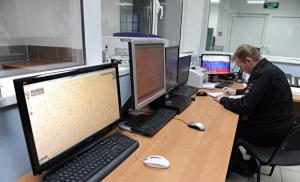Stages of industrial extraction of mercury. For everyone and everything
Mercury, one of the rare elements in the Earth's crust, looks like a shiny, silvery-white heavy metal. Under normal conditions, it remains liquid and unusually mobile. Mercury can become a solid metal at -39 ° C. At room temperature it easily evaporates without smell and taste, which poses a threat of poisoning. In everyday life, a broken thermometer can serve as a source of poisoning.
Pure mercury metal is obtained from a mineral ore called cinnabar, which is heated to high temperatures, the mercury is evaporated and condensed.
Where is mercury used?
Unique properties made mercury in modern industries important element. There is no industry where this unusual metal is not used:
Mercury is a substance, when leaked, a person must act with lightning speed. With proper elimination of the consequences, it becomes possible to quickly protect yourself from harmful mercury vapors. And the help provided on time can save a person's life.
Compared to incandescent lamps, modern energy-saving lamps have obvious advantages. But due to the design features, you need to use them carefully and take measures if they crashed energy saving light bulb.
Today it is well known what negative impact mercury has a health effect, so it is important to be able to properly dispose of the crashed mercury thermometer
In order to save energy resources, more and more lamps are used daylight, but these lighting fixtures use mercury, a hazardous metal that must be subject to mandatory disposal
How mercury works in appliances
Electric accumulator
Contains dioxysulfate-mercury element. Which is a chemical current source. The electrolyte is water solution zinc sulfate, anode - zinc, cathode - a mixture of graphite with mercury oxide and mercury sulfate.
The types of such batteries are used in mobile phones, laptops, digital cameras.
 A device that allows the electrochemical analysis of substances and chemical processes... One polarizable drop-mercury electrode is immersed in the test solution, the other is a non-polarizable electrode with a large surface covered with a layer of mercury. Then an increasing voltage is applied to the electrodes. The magnitude of the current passed through the solution is measured with a galvanometer. Based on the measurements obtained, a polarogram is constructed.
A device that allows the electrochemical analysis of substances and chemical processes... One polarizable drop-mercury electrode is immersed in the test solution, the other is a non-polarizable electrode with a large surface covered with a layer of mercury. Then an increasing voltage is applied to the electrodes. The magnitude of the current passed through the solution is measured with a galvanometer. Based on the measurements obtained, a polarogram is constructed.
The polarography method is used to study the composition of harmful substances in industrial emissions, determine the degree of oxygen saturation of the blood, diagnose diseases such as malignant tumors, radiation sickness by the serum polarogram.
Fluorescent and quartz lamps
The structure consists of a sealed flask (glass or quartz) filled with a mixture of gases and mercury vapors, and electrodes attached to both sides. Through contacts it is supplied electrical discharge and invisible ultraviolet rays appear in the flask, for the transformation of which into visible light the surface of the flask is covered from the inside with a layer of phosphor. Different coating compositions can be obtained with different color range... Ultraviolet radiation has a bactericidal effect, medicine uses this property for prophylactic and anti-epidemiological purposes.
Barometer
Inside the device there is a flask with mercury sealed on one side, which reacts to the slightest differences atmospheric pressure... Depending on the changes taking place, the mercury column, rising or falling on the barometer scale, shows the expected weather.

Used to measure blood pressure person.
According to the principle of communicating vessels, the mercury in the glass tube rises as a result of the supply of compressed air with a rubber bulb.
The pressure is measured on the scale of the tube.
Differs in high accuracy in comparison with the newly-minted devices on, but the industry is no longer produced.
Thermometers
They are based on the property of mercury to change its volume under the influence of temperature. It consists of a glass reservoir filled with mercury and a scale, the graduation of which has a wide range depending on the purpose of the thermometer (from -39 ° C to + 357 ° C).
Mercury Diffusion Pump
It is included in the assembly of vacuum units and with its help a deep vacuum is achieved. Serves for pumping gas or steam from the working chamber of the pump. The process occurs as a result of a periodic change in pressure inside the chamber by heating and subsequent cooling of the mercury. Gas tends to the area with reduced pressure creating a vacuum.
Mercury is hazardous to health
 The eightieth element of the periodic table is recognized as a global environmental pollutant. In terms of harm to life and health of people, it belongs to the first class of danger. Enterprises and factories are suppliers of mercury to the atmosphere. using it in their production.
The eightieth element of the periodic table is recognized as a global environmental pollutant. In terms of harm to life and health of people, it belongs to the first class of danger. Enterprises and factories are suppliers of mercury to the atmosphere. using it in their production.
When mercury enters the air, water bodies and soil, the processes of formation of organic compounds, which are highly toxic, take place.
The accumulation of mercury and mercury compounds in the body leads to damage to the skin, respiratory tract, internal organs, nervous and hematopoietic systems.
From a natural component, mercury has turned into a threat to human health.
Mineral, natural metallic mercury. A transition metal, which at room temperature is a heavy, silvery-white liquid, the vapors of which are extremely toxic. Mercury is one of two chemical elements (and the only metal), the simple substances of which, when normal conditions are in liquid state of aggregation(the second such element is bromine). Sometimes contains an admixture of silver and gold.
See also:
STRUCTURE
The system is trigonal, hexagonal-scalenohedral (below -39 ° C).PROPERTIES
 Tin white color. Strong metallic luster. Boiling point 357 ° C. The only liquid mineral at ordinary temperatures. It solidifies, acquiring a crystalline state at -38 ° C. Density 13.55. It evaporates easily on fire with the formation of toxic fumes. In ancient times, inhalation of these vapors was the only available treatment for syphilis (according to the principle: if the patient does not die, he will recover. It is a diamagnet.
Tin white color. Strong metallic luster. Boiling point 357 ° C. The only liquid mineral at ordinary temperatures. It solidifies, acquiring a crystalline state at -38 ° C. Density 13.55. It evaporates easily on fire with the formation of toxic fumes. In ancient times, inhalation of these vapors was the only available treatment for syphilis (according to the principle: if the patient does not die, he will recover. It is a diamagnet.
RESERVES AND PRODUCTION
 Mercury is a relatively rare element in the earth's crust with an average concentration of 83 mg / t. However, due to the fact that mercury weakly binds chemically with the most abundant elements in the earth's crust, mercury ores can be very concentrated compared to ordinary rocks. The richest in mercury ores contain up to 2.5% mercury. The main form of finding mercury in nature is scattered, and only 0.02% of it is contained in deposits. Mercury content in different types igneous rocks are close to each other (about 100 mg / t). From sedimentary rocks, the maximum concentrations of mercury are found in clay shales (up to 200 mg / t). In the waters of the World Ocean, the mercury content is 0.1 μg / l. The most important geochemical feature of mercury is that it has the highest ionization potential among other chalcophilic elements. This determines such properties of mercury as the ability to be reduced to its atomic form (native mercury), significant chemical resistance to oxygen and acids.
Mercury is a relatively rare element in the earth's crust with an average concentration of 83 mg / t. However, due to the fact that mercury weakly binds chemically with the most abundant elements in the earth's crust, mercury ores can be very concentrated compared to ordinary rocks. The richest in mercury ores contain up to 2.5% mercury. The main form of finding mercury in nature is scattered, and only 0.02% of it is contained in deposits. Mercury content in different types igneous rocks are close to each other (about 100 mg / t). From sedimentary rocks, the maximum concentrations of mercury are found in clay shales (up to 200 mg / t). In the waters of the World Ocean, the mercury content is 0.1 μg / l. The most important geochemical feature of mercury is that it has the highest ionization potential among other chalcophilic elements. This determines such properties of mercury as the ability to be reduced to its atomic form (native mercury), significant chemical resistance to oxygen and acids.
One of the world's largest mercury deposits is located in Spain (Almaden). There are known deposits of mercury in the Caucasus (Dagestan, Armenia), in Tajikistan, Slovenia, Kyrgyzstan (Khaidarkan - Aydarken), Ukraine (Gorlovka, Nikitovsky mercury plant).
There are 23 mercury deposits in Russia, industrial reserves amount to 15.6 thousand tons (as of 2002), of which the largest are explored in Chukotka - Zapadno-Palyanskoe and Tamvatneiskoe.
Mercury is obtained by roasting cinnabar (mercury (II) sulfide) or by the metallothermic method. The mercury vapor is condensed and collected. This method was used by the alchemists of antiquity.
ORIGIN
 Mercury is present in most sulfide minerals. Especially high its contents (up to thousandths and hundredths of a percent) are established in faded ores, antimonites, sphalerites and realgars. The closeness of the ionic radii of divalent mercury and calcium, monovalent mercury and barium determines their isomorphism in fluorites and barites. In cinnabar and metacinnabar, sulfur is sometimes replaced by selenium or tellurium; the selenium content is often hundredths and tenths of a percent. Extremely rare mercury selenides are known - thymanite (HgSe) and onofrit (a mixture of thymanite and sphalerite).
Mercury is present in most sulfide minerals. Especially high its contents (up to thousandths and hundredths of a percent) are established in faded ores, antimonites, sphalerites and realgars. The closeness of the ionic radii of divalent mercury and calcium, monovalent mercury and barium determines their isomorphism in fluorites and barites. In cinnabar and metacinnabar, sulfur is sometimes replaced by selenium or tellurium; the selenium content is often hundredths and tenths of a percent. Extremely rare mercury selenides are known - thymanite (HgSe) and onofrit (a mixture of thymanite and sphalerite).
APPLICATION
 Mercury is used as a working fluid in mercury thermometers (especially high-precision ones), since it has a fairly wide range in which it is in a liquid state, its coefficient of thermal expansion is almost independent of temperature and has a relatively low heat capacity. An alloy of mercury with thallium is used for low temperature thermometers.
Mercury is used as a working fluid in mercury thermometers (especially high-precision ones), since it has a fairly wide range in which it is in a liquid state, its coefficient of thermal expansion is almost independent of temperature and has a relatively low heat capacity. An alloy of mercury with thallium is used for low temperature thermometers.
Mercury vapor is filled fluorescent lamps because the vapors glow in a glow discharge. There is a lot of ultraviolet light in the emission spectrum of mercury vapor, and in order to convert it into visible light, the glass of fluorescent lamps is coated with a phosphor from the inside. Without a phosphor, mercury lamps are a source of hard ultraviolet radiation (254 nm), in which they are used. Such lamps are made from quartz glass, which transmits ultraviolet light, therefore they are called quartz.
Mercury and mercury-based alloys are used in sealed switches that turn on at a certain position.
Mercury is used in position sensors.
Mercury (I) iodide is used as a semiconductor radiation detector.
Mercury (II) fulminate ("explosive mercury") has long been used as an initiating explosive (Detonators).
Mercury (I) bromide is used in the thermochemical decomposition of water into hydrogen and oxygen (atomic-hydrogen energy).
The use of mercury in alloys with cesium as a highly efficient working medium in ion engines is promising.
Until the middle of the 20th century, mercury was widely used in barometers, manometers and sphygmomanometers (hence the tradition of measuring pressure in millimeters of mercury).
Mercury compounds were used in the hat industry to make felt.
Mercury - Hg
CLASSIFICATION
| Strunz (8th Edition) | 1 / A.02-10 |
| Nickel-Strunz (10th Edition) | 1.AD.05 |
| Dana (7th Edition) | 1.1.10.1 |
| Dana (8th Edition) | 1.1.7.1 | Hey's CIM Ref | 1.12 |
Everyone knows how dangerous the balls of mercury are since childhood. Severe poisoning, in some cases leading to disability and even death, is one of the possible consequences such intoxication.
But not in all cases, mercury actually poses a significant threat to health. In this article, you will find out when to fear it and what to do to minimize the risks.
Why is mercury dangerous?
Mercury belongs to the 1st hazard class substances. When it enters the body, this metal tends to accumulate - 80% of the inhaled vapors are not excreted. In acute poisoning, it can cause severe intoxication and death, in chronic poisoning, it can lead to severe disability. First of all, those organs that accumulate the substance best of all suffer - the liver, kidneys, and the brain. Therefore, dementia, renal and hepatic failure are a common result of mercury poisoning. When vapors are inhaled, the poisoning first affects the condition respiratory system, later the central nervous system (CNS) is affected and internal organs, and with prolonged exposure, all systems of the body gradually suffer. Mercury is especially dangerous for pregnant women, as it affects intrauterine development, and children.
However, such serious consequences are caused not by the metal itself, but by its vapors - they are the main danger in everyday life. The balls of mercury from the broken thermometer begin to evaporate already at a temperature of + 18 ° C. Therefore, at home, where the air temperature is usually much higher, the substance evaporates quite actively.
Mercury compounds, such as methylmercury, are no less dangerous for the body. In 1956, mass poisoning was identified in Japan, caused by this particular compound. Chisso systematically dumped mercury into the bay from which the fishermen fished. As a result, 35% of those poisoned by contaminated fish died. After this incident, such intoxications were called Minamata disease (after the name of the local city). In everyday life, a person practically does not encounter such severe poisoning.
Acute mercury poisoning is characterized by pronounced symptoms. Among the characteristic symptoms are the following:
- Weakness.
- Nausea and vomiting.
- Headache.
- Pain in the chest and abdomen.
- Diarrhea, sometimes bloody.
- Difficulty breathing, swelling of the mucous membranes.
- Salivation and metallic taste in the mouth.
- Temperature rise (in some cases up to 40 ° C).
Symptoms of poisoning develop within a few hours after the ingestion of a high concentration of vapors or mercury compounds into the body. If during this time the victim does not receive a qualified medical care, poisoning will lead to irreversible consequences. A person develops a dysfunction of the central nervous system, damage to the brain, liver and kidneys, loss of vision, and with a large dose toxic substance death may occur. Acute poisoning is extremely rare: more often in case of industrial accidents, in a domestic environment, such a situation is practically impossible.
Mercurialism, or chronic mercury poisoning, is much more common. Mercury is odorless, so it is almost impossible to notice the balls of the substance, which, for example, rolled under the plinth, in the cracks between the floorboards or remained in the pile of the carpet. But even the smallest droplets continue to release deadly vapors. Since their concentration is insignificant, the symptoms are not so pronounced. At the same time, small doses over a long period lead to serious consequences, because mercury has the ability to accumulate in the body.
Among the first characteristic signs:
- General weakness, fatigue.
- Drowsiness.
- Headache.
- Dizziness.
Long-term exposure to mercury vapor can lead to hypertension, atherosclerosis, brain and central nervous system damage, and increases the risk of tuberculosis and other lung damage. Suffers from mercury vapor poisoning thyroid, heart disease develops (including bradycardia and other rhythm disturbances). Unfortunately, the symptoms of mercurialism in the initial stages of poisoning are nonspecific, so people often do not attach due importance to them.
In the event that a mercury thermometer breaks in the house or metal gets into an open space from another source (for example, from a mercury lamp), it is important to make sure that the mercury is completely collected. You also need to contact services that will help you dispose of the substance - thrown into the trash can collected mercury poses no less a threat.
Of course, the main source of mercury vapor in the home is a mercury thermometer. On average, one thermometer contains up to 2 grams of mercury. This amount is not enough for severe poisoning (if the mercury is collected correctly and on time), but it is quite enough for mild and chronic intoxication. For household calls special services The Ministry of Emergency Situations, as a rule, does not come, but they will give advice on a specific case. In addition, it is they who will tell you where to hand over the collected metal.
A large drop of mercury and the same amount of metal in small balls will evaporate differently. At the expense of larger area surface, small droplets will release more hazardous vapors for short period... Namely, they are often missed by people who independently eliminate the consequences. broken thermometer.
The most dangerous situations:
- Metal got on upholstered furniture, children's toys, carpet, fabric slippers (it is impossible to completely collect mercury from such surfaces, things will have to be thrown away).
- Mercury long time was in a room with closed windows (this increases the concentration of vapors).
- The balls of mercury rolled across the heated floor (evaporation rate increases).
- The floor is covered with parquet, laminate, wooden boards. In order to completely remove all the mercury, it will be necessary to remove the coating at the place of its spill - small balls easily roll into the cracks.
In addition to thermometers, mercury is contained in some devices, in mercury gas-discharge lamps and energy-saving fluorescent lamps. The amount of the substance in the latter is quite small - no more than 70 mg of mercury. They pose a danger only if several lamps have been broken in the room. Fluorescent lamps must not be disposed of in the trash can, they must be returned to special centers recycling.
The dangers of mercury are often discussed in the context of vaccinations. Indeed, its compound thiomersal (merthiolate) has been used as a preservative in many vaccines. Back in the 1920s, the concentration was quite dangerous; since the 1980s, its content in one dose does not exceed 50 mcg. The half-life of mercury compounds in such an amount is about 4 days even in infants, and after 30 days the substance is completely excreted from the body.
Despite this, most vaccines today do not contain merthiolate at all. This is due not so much to the danger of the preservative as to the scandal that began 20 years ago. In 1998, the most prestigious medical journal Lancet published an article by researcher Andrew Wakefield, who linked vaccination (in particular, the thiomersal MMR vaccine against measles, rubella, mumps) with the development of autism. The material caused heated discussions in the medical community and real panic among ordinary citizens. However, after a few years it was proved that Wakefield's article was based on bogus data, there are no real facts in its basis, and the connection between autism and thiomersal has not been proven. The same Lancet magazine published a refutation of the material. Nevertheless, it is this article that is actively cited by representatives of the anti-vaccination movement. Today, vaccines produced in Europe and the United States do not contain merthiolate, and therefore cannot pose any danger of mercury poisoning.
In small quantities, mercury can be contained in sea fish and seafood. Ingestion of significant amounts of metal with food, as a rule, causes mild intoxication, the consequences of which are easy to eliminate. First aid for such poisoning is simple - you need to induce vomiting, and then drink a few pills activated carbon or take any other sorbent. After that, be sure to consult a doctor. This is especially important for pregnant women and children, since for them mercury poisoning is the greatest danger.
Symptoms of mercury intoxication:
- Nausea.
- Dizziness.
- A noticeable iron taste in the mouth.
- Swelling of the mucous membranes.
- Dyspnea.
If a thermometer breaks in the house, do not panic - quickly taken measures will help to avoid negative consequences... Special demercurization kits are sold in pharmacies, but you can collect mercury without them.
Ventilation and reduction of air temperature
Open window will help reduce the concentration of mercury vapor. It is advisable not to enter the room where the thermometer crashed for a few more days, and keep the windows there constantly open. In winter, turn off the warm floor and screw on the batteries - the lower the temperature in the room, the less mercury evaporates.
- Collection of mercury
For large drops, you can use a syringe, for small ones - ordinary adhesive tape, plasticine, wet cotton wool. Before cleaning, shine a lamp on the place of the broken thermometer - so everything, even the smallest balls, will be visible. Mercury is collected in gloves, shoe covers and a respirator, only in an airtight container (plastic or glass container). All items that have gotten mercury, including what it was collected with, are also placed in an airtight container.
- Treating the area where the mercury has been spilled
The surfaces are treated with a solution of potassium permanganate or a chlorine-containing preparation (for example, "Belize" at a concentration of 1 liter per 8 liters of water). Leave the floor and surfaces for 15 minutes, then wash off clean water... The final stage is the treatment of the floor with potassium permanganate (1 g of potassium permanganate per 8 liters of water). As a result, mercury compounds are formed that do not produce vapors.
- What is prohibited
Do not pick up mercury with a broom, mop or vacuum cleaner. Also, do not wash contaminated clothing, slippers, Stuffed Toys- the substance is difficult to wash off, in addition, it may remain in the mechanism washing machine... All things that have come into contact with mercury must be disposed of.
- How to help yourself
The person who collected the mercury should rinse his hands well after the procedure and rinse his mouth, brush his teeth. You can drink 2-3 tablets of activated carbon. Gloves, shoe covers and clothing should be disposed of if mercury has come into contact with it.
Mercury is amazing chemical element... This is obvious if only because mercury is the only metal found in a liquid state under what we usually call normal conditions. Under these conditions, mercury is capable of vaporizing and forming a mercury atmosphere. It is these properties that determined the special position of mercury in our life. This unusual metal has a noble silvery-white color and its fumes are extremely toxic. And although mercury is not as actively used in industry as iron, gold or silver, there are many myths about it among the people. We will tell you about the five most common ones ...
Mercury has rendered great services to humanity. For many centuries it has been used in a wide variety of spheres of human activity - from cinnabar paint to nuclear reactor... On use various properties mercury, independent industries were created, including gold mining by amalgamation, the production of gas-discharge mercury lamps, chemical current sources, chlorine and caustic soda. Mercury is used in medicine, pharmaceuticals and dentistry. She served as a coolant in one of the first reactors at fast neutrons.
In 1886, the first mercury in Russia was produced in Gorlovka (now Donetsk region of Ukraine). This unusual metal has a noble silvery-white color and its fumes are extremely toxic. Although mercury is not as actively used in industry as iron, gold or silver, there are many myths about it among the people. We will tell you about the five most common ones ...
DEADLY BALLS
There is a myth that the balls of mercury, which are formed, for example, after a thermometer breaks, are extremely dangerous to human health. This is not entirely true, mercury itself is not dangerous. The harm is done by mercury vapors. Therefore, contact of mercury balls on the skin will not cause such a reaction as prolonged inhalation of its vapors.
Mercury vapors lead to disturbances in the central nervous system person. The first symptoms are not particularly eloquent, they can be easily confused with a common malaise. The primary damage to the body by mercury vapor is characterized by increased fatigue, weakness, headaches, and dizziness begins a little later.
Mercury tremor develops later. It is at this stage that, as a rule, they go to the doctor. Mercury tremor is accompanied by trembling of hands, eyelids, lips, often there is a metallic taste in the mouth, lacrimation, and stomach problems.
SELF-ELIMINATION OF THE MERCURY THREAT
Many people believe that you can collect the mercury yourself and eliminate the danger of poisoning. However, in practice, few achieve such results. Mercury is very mobile and easily breaks down into small particles that are difficult to detect "by eye".
In this regard, to eliminate the mercury threat, it is necessary to use the help of professionals who will establish ecological state apartments. The environmental service must carry out measures to clean the premises, provide expert information on the prevention of poisoning.
If you are still trying to cope with the mercury threat on your own, then you need to ventilate the area well. For example, if you do not ventilate a 16 sq. m. with a ceiling height of 3 m, which contains 4 grams of mercury (the volume contained in a medical thermometer), then the concentration of mercury vapors in this area will exceed the norm by 27,667 times.
RED MERCURY
In the early 1990s, rumors spread about the creation of a new type of mercury - red mercury or RM 20/20 substance, allegedly produced in secret scientific laboratories of the USSR.
Red mercury, it was claimed, possessed fantastic properties - from superdensity (over 20 g / cm3) and super radioactivity to cosmic origin and the ability to cure any ailments.
Sellers asked for 1 kilogram of mercury from 300 to 400 thousand dollars. Moreover, there were buyers, including Western ones. Disguised as red mercury, the buyer was given anything from mercury amalgam to ordinary mercury colored with dyes or brick powder.
Many Soviet nuclear physicists have repeatedly denied the possibility of creating such a substance, explaining that this not only contradicts the laws of nature, but is also impossible at the modern technological level.
Rumors about the substance RM 20/20 died down by themselves after a few years. Current researchers believe that the hype was created deliberately, in the name of the monetary interests of many high-ranking people. However, articles about the reality of scientific developments to create red mercury appear today.
THE MYTH ABOUT EXPENSIVE
Police officers regularly seize mercury from citizens who are trying to sell it. Such transactions are prohibited by law. Experts argue that in reality few people need mercury and sales are held only by people's misconceptions about the high cost of mercury.
In fact, mercury is not a valuable and demanded substance. It is used extremely rarely, in particular, in the manufacture of fluorescent lamps.
Mercury mining in Russia was stopped back in 1991. But, according to experts, its reserves will be enough for another ten years of industry operation. Illicit sales of this heavy toxic metal will flourish by about the same number, experts say.
Some craftsmen still manage to use mercury for personal purposes. In particular, the metal can be used to remove oxides from gold.
USEFULNESS OF MERCURY
Many are convinced that mercury has healing properties and is necessary for the body to function properly. Articles appear that mercury has a certain biotic effect and has a stimulating effect on vital processes.
The average person weighing 70 kilograms contains about 13 milligrams of mercury, but it does not seem to play any physiological role. At least, the vital necessity of this metal for humans and other organisms has not been proven.
At the same time, it has been scientifically proven that mercury, in doses exceeding the physiological need, is toxic to all forms of life, and in almost any of its states.
Resuscitation doctor Rafael V. Makarov:
Indeed, it is not mercury that is dangerous, but its vapors leading to chronic poisoning. And further. In the old days it was believed that mercury has a magical effect and saves from evil spirits and poisons.
The victim of this myth was Ivan the Terrible, who kept a vat of mercury under the bed. Long-term inhalation of mercury vapors explains the king's mental disorders and his inexplicable aggression. And also the fact that at the end of his life he practically "rotted alive".
At present, in Russia, the State Balance of Mineral Reserves includes 24 mercury deposits. Most of them belong to the proper mercury (cinnabar) with reserves, as a rule, no more than 2 thousand tons of metal. Only four deposits are relatively large - Tamvatney (14 thousand tons), West Palyanskoye (10.1 thousand tons), Chagan-Uzunskoye (14 thousand tons), Zvezdochka (3 thousand tons). The qualitative state of the mineral resource base of the domestic mercury industry is generally assessed as unsatisfactory, since the ores of most of the known deposits are characterized by low content mercury (significantly less than 1%). The only exceptions are the ores of the Zvezdochka, Balgikakchan, Chempurinskoe and Olyutorskoe deposits (Table 3).
Table 3. Regional structure of balance reserves of mercury in Russia
| Subject of the federation | Field | Geological industrial type | Share in reserves (B + C 1 + C 2),% * | Hg content in ore,% ** |
| Mercury deposits proper | ||||
| Altai region | Sukhonkoe | Carbonate | 0,6 | 0,24 |
| Kamchatka region | Lyapganayskoe | Opalite | 3,5 | 0,63 |
| Olyutorskoe | 1,7 | 1,05 | ||
| Chempurinskoe | 0,7 | 1,07 | ||
| Kemerovo region. | Kupriyanovskoe | Quartz-dickite | 0,2 | 0,32 |
| Krasnoyarsk | White stone | 2,3 | 0,47 | |
| Salinskoe | 2,4 | 0,42 | ||
| Distant | 1,8 | 0,31 | ||
| Cascade | 0,1 | 0,14 | ||
| Republic | Chagan-Uzunskoye | Listvenite | 7,0 | 0,42 |
| Cheremshanskoe | Carbonate | 0,1 | 0,50 | |
| Saha Republic | Star | Quartz-dickite | 6,2 | 1,59 |
| Gal-Khaya | 1,1 | 0,60 | ||
| North | 0,4 | 1,09 | ||
| The average | 0,3 | 3,40 | ||
| Balgikakchan | 0,1 | 1,63 | ||
| Tyva Republic | Terlighai | Polyargillite | 5,1 | 0,22 |
| Republic of North. Ossetia - Alania | Tibskoe | Quartz-dickite | 1,6 | 0,25 |
| Khabarovsk region | Lanskoe | Polyargillite | 1,2 | 0,52 |
| Chukotka Autonomous | Tamvatney | Listvenite | 33,1 | 0,70 |
|
West Palyanskoe |
Quartz-dickite | 24,0 | 0,53 | |
| The end of the table. 4 | ||||
| Mercury-containing deposits | ||||
| Republic Bashkortostan |
Podolsk | Copper-pyrite | 4,6 | 0,0025 |
| Chelyabinsk region | Talganskoe | 0,6 | 0,0059 | |
| Sverdlovsk region. | Safyanovskoe | 0,2 | 0,0014 | |
* The revealed reserves of mercury in Russia at the beginning of 2001 were estimated at 45.3 thousand tons, of which 15.6 thousand tons were industrial reserves.
** The average mercury content in the ores of Russian deposits is estimated at 0.453% (the average mercury content in the ores of deposits, for example, in Spain reaches 1.9%, Algeria - 1.75%, Kyrgyzstan - 1%).
The Aktash Mining and Metallurgical Enterprise (up to 150 tons / year) and NPP Kubantsvetmet CJSC (up to 25-30 tons / year) have potential production facilities for the production of primary mercury in Russia. However, the small scale and low quality of mercury ores of the Sakhalin deposit (Krasnodar Territory), the almost complete absence of its own raw material base and organizational and financial reasons at the Aktash GMP (Altai Republic) do not give reason to hope for the resumption of mining operations at these sites. Potentially, the Aktash GPM can process ores of the Sukor deposit located 90 km away. It is also known that more than 7 thousand tons of ore (about 6 tons of mercury) has been stored near the metallurgical plant of ZAO NPP Kubantsvetmet, which is planned to be processed in the coming years; another 30 thousand tons of ore (about 25 tons of mercury) is located near the former mines and open pit of the Sakhalin deposit.
The development of the large Tamvatney and Zapadno-Palyanskoye deposits (like many others) is impossible without significant investments, which, given the current situation in the world mercury market, are difficult to count on. In addition, their development may negatively affect, for example, spawning grounds. valuable breeds fish, the state of the environment, etc. Moreover, given the scale of mercury-containing waste accumulated in Russia to date, there is no urgent need for the development of mercury deposits, since the domestic industry - with the implementation of certain measures - can be provided with secondary and associated mercury.
So, the State balance of mineral reserves includes 3 mercury-containing copper-pyrite deposits - Podolskoye (Bashkortostan), Talganskoye (Chelyabinsk region), Safyanovskoye ( Sverdlovsk region) (see Table 4). The ores mined annually at the Safyanovskoye deposit contain up to 10 tons of mercury. Mercury is present in significant concentrations in the ores of copper-pyrite, polymetallic, gold-silver and other types of deposits. However, with the technological schemes used in Russia for the processing of ores and concentrates of non-ferrous metals, associated mercury was not extracted, just as it is not extracted now; a significant part of it dissipates in environment and, for example, enters the sulfuric acid produced at some metallurgical plants. A significant amount of mercury goes to the tailings at the concentration plants.
As noted above, in the 1980s. In small quantities, associated mercury was obtained from zinc concentrates at the Chelyabinsk Zinc Plant. On a more significant scale, mercury was extracted at the Khaidarkan Combine from the antimony concentrate of the Anzor Combine enrichment plant. According to estimates, up to 100 tons of associated mercury can be produced at non-ferrous metallurgy enterprises in Russia per year. According to the calculations of the author of these lines, in 2000-2003. with various raw materials (mainly concentrates and ores) for metallurgical processing for Russian factories non-ferrous metallurgy (for the smelting of zinc and blister copper) annually received at least 60 tons of mercury.
Export of Russian mercury
1992-1998 Russia, as already noted, has sold part of its stocks of mercury on the world market. For example, in the mid-1990s. a significant share of Spanish imports was mercury from Russian stocks: the Minas de Almaden company bought it, refined it and resold it, including Russian enterprises... The dynamics of mercury export by Russia to non-CIS countries looks like the following (Table 4).
Table 4. Dynamics Russian exports mercury *
| Year | Mercury export, tons |
| 1992 | 150 |
| 1993 | 535 |
| 1994 | 400 |
| 1995 | 926 ** |
| 1996 | 345,9 *** |
| 1997 | 1000 **** |
| 1998 | 70 |
| 1999 | 965 |
| 2000-2001 | There is no data ***** |
* In the annually published collections "Customs statistics of foreign trade Russian Federation»There is no direct information on the export and import of mercury.
** 120 tons of Russian mercury entered the United States.
*** 79 tons of mercury were exported from Russia to the USA, 120 tons each.
**** Mercury entered Rotterdam, where by May 1998 most of it was sold, and the remaining 276 tons were purchased by Minas de Almaden; according to the data, 120 tons of mercury came from Russia to the USA.
***** By, small volumes of mercury were exported by OOO Merkom. There is information that a certain amount of mercury obtained from the waste of the gold mining industry at one of the enterprises of the Irkutsk region, in the early 2000s. was sold to China, and the Chelyabinsk Zinc Plant sends mercury sludge from zinc production to Kyrgyzstan for processing.
 The data on the import of metallic mercury by Russia are sporadic: in 1997 - 30 tons, in 1998 - 46 tons, in 1999 - 11 tons. Termopribor OJSC (Klin, Moscow Region) annually purchased from Spain (from Minas de Almaden) about 15-20 tons of metallic mercury. In 2002, ZAO NPP Kubantsvetmet received 2,775 kg of substandard (rough, waste) mercury from Belarus (from UE Beltsvetmet) for processing (refining).
The data on the import of metallic mercury by Russia are sporadic: in 1997 - 30 tons, in 1998 - 46 tons, in 1999 - 11 tons. Termopribor OJSC (Klin, Moscow Region) annually purchased from Spain (from Minas de Almaden) about 15-20 tons of metallic mercury. In 2002, ZAO NPP Kubantsvetmet received 2,775 kg of substandard (rough, waste) mercury from Belarus (from UE Beltsvetmet) for processing (refining).
The volume of world trade in mercury (export + import) in 1997 amounted to 7,600 tons. Mercury was exported from 29 countries, of which only nine produced primary metal. Mercury was imported by 53 countries, with Hong Kong, China and the Netherlands accounting for almost half of its total world imports (Hong Kong and the Netherlands - mainly for the purpose of resale). In 1999, the volume of world trade in mercury (export + import) amounted to more than 6128 tons.
It is interesting to note that in the 1990s. among the exporting countries of mercury was Estonia (in 1977 - 35 tons, in 1998 - 17 tons). Obviously, stocks of metal were being sold, or metallic mercury received in one way or another from Russia. It is significant that quite recently an underground storage facility was discovered in Latvia, which contained 2.5 tons of mercury.
The export of mercury will be completely banned in the European Union from March 2011 - this decision was made in 2008 by the EU Competition Council of Ministers. This regulation, which also obliges the EU states to ensure the safe storage of mercury residues, was adopted in order to reduce the volume of emissions of toxic types of heavy metals into the atmosphere.













